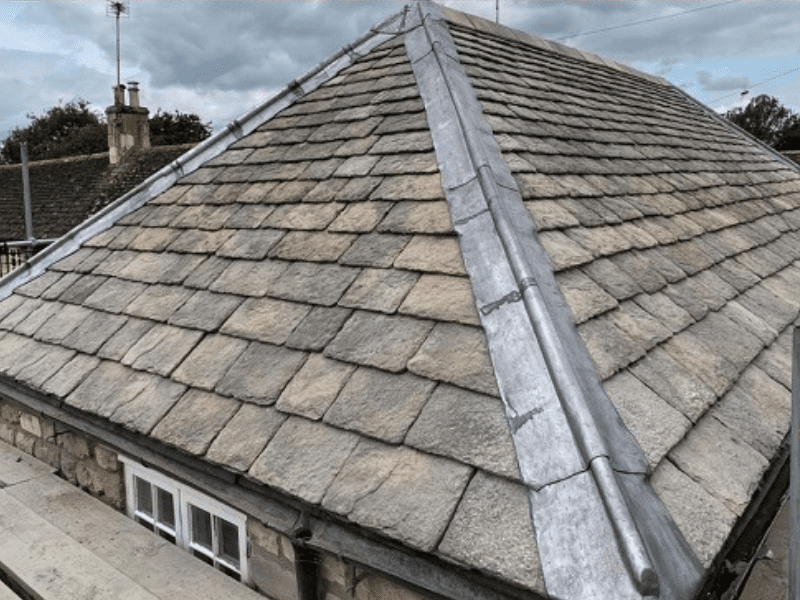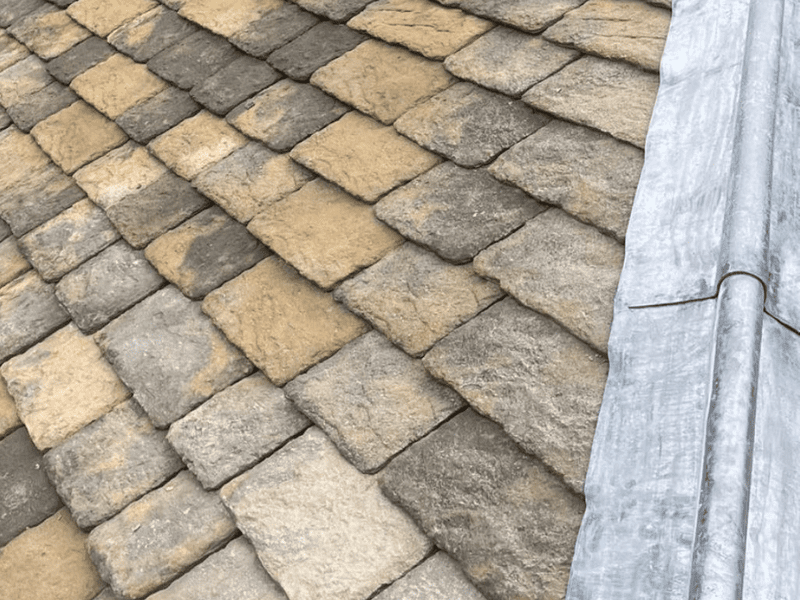What are lead hips and ridges?
Lead hips and ridges play an important role in heritage roofing.
Lead hips and ridges are crucial components in heritage roofing. They play a vital role in the structure and durability of a heritage roof. Heritage Roofing specialises in designing hip roofs for construction, using materials such as Collyweston slate, Bradstone Cotswold, and various other roofing slates and tiles.
What style of buildings use hip roofs?
Hip roofs, commonly seen on church steeples, are known for their steep pitch. Their practicality in construction makes them a versatile choice, suitable for both heritage and modern buildings.
Lead, the preferred choice for constructing hips and ridges stands out for its exceptional durability. Its quality surpasses that of concrete or clay alternatives. Moreover, lead can be secured to the roof without relying on a mortar bed, accommodating any irregularities between joining pitched roof slopes.


Hip roof ventilation.
Designing and constructing a hip roof is more labour-intensive than other styles due to its intricacies. One crucial factor to consider is proper ventilation, which is essential to prevent heat build-up in the attic. This requires additional systems like ridge vents, soffit vents, or gable vents. The increased roof height allows for extra ventilation and more attic space, contributing to a well-constructed roof. Understanding and implementing proper ventilation is key to a successful roofing project, and our expertise is crucial in this area.
Put your trust in the experts
For your heritage roof projects, trust the work to experienced craftsmen with a proven track record of quality. At Heritage Roofing Services, our team possesses high skills in all aspects of slate roofing. We provide free, no-obligation quotes and expert advice, ensuring you have the information you need for your roofing project and confidence in our expertise.